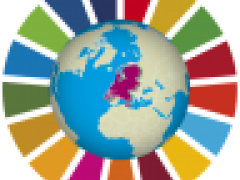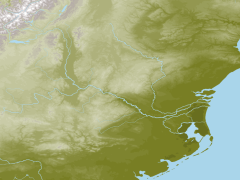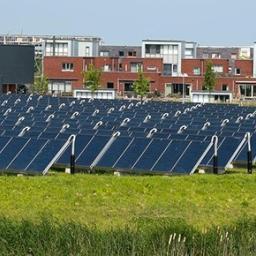Visualising the complex cohesion between global sustainability challenges
The publication People and the Earth, with 23 infographics on the United Nations’ goals for sustainable development, was launched during an event at the Museon in The Hague. The global challenges related to the sustainable use of food, water, land and energy are complex, due to various interdependencies. PBL uses infographics to visualise these global connections, in which also the potential solutions for achieving a sustainable world are clearly identified.
Hans Mommaas, Director-General of PBL Netherlands Environmental Assessment Agency, presented the report to Christiaan Rebergen, the Director-General for International Cooperation from the Ministry of Foreign Affairs.
Dutch knowledge
In the Netherlands, there is a large amount of knowledge about food production, water management and sustainable trade. This knowledge may contribute towards realising the global goals for sustainable development, both in the Netherlands and internationally. In order to achieve such goals, it is important to strive towards inclusive green growth – growth whereby nature, environment and fair distribution are taken into account.
In these infographics, PBL zooms in on the future developments and challenges, as well as on solutions and areas of tension. The environment plays a relevant role in several of those solutions, which is why the mutual dependence between people and the earth stands at the centre. This publication identifies global interconnectedness and complexity of challenges and is intended to encourage discussion, in order to achieve a more sustainable world.
Urbanisation is continuing and involves certain risks
One of the 23 infographics shows that, by 2050, 70% of the world population (9 billion people) is expected to live in urban areas. Migration to cities is projected to be largest in developing countries, particularly in Sub-Saharan Africa, where many people are living in slums. Urbanisation, in those areas, creates certain risks and, for example, may lead to problems related to the food and energy supply, and, in river deltas, to flood risk.
The growing demand for land for various purposes
There is a fair amount of tension between people and the earth with respect to land use for food, water and energy to support an ever-growing world population — with prosperity and access to natural resources also being unevenly distributed. If current trends continue, the amount of land used for agriculture will increase, while meeting productivity targets becomes more difficult, due to poor land management and climate change. In order to provide the growing world population with sufficient food, materials and renewable energy, while reserving sufficient space for nature and biodiversity, the various land uses need to be managed properly — that is to say, sustainably and fairly.
Collaboration is crucial for global sustainability goals
Collaborations between governments, cities, businesses, NGOs and financial institutions are increasing, in order to achieve global sustainability goals. For example, in the financial field, there is a clear need for more collaboration between public and private parties; on the one hand, this is necessary to realise the required investments in inclusive and green projects with wider public interests, and, on the other hand, to capture the financial risks.
In 2015, around the world, countries, including the Netherlands, have joined the 2030 Agenda for Sustainable Development and the Sustainable Development Goals (SDGs). The SDGs focus on a certain level of welfare for the entire world population, while taking good care of the planet. For the physical environment, this means sustainable consumption and production and sound management of natural resources.




